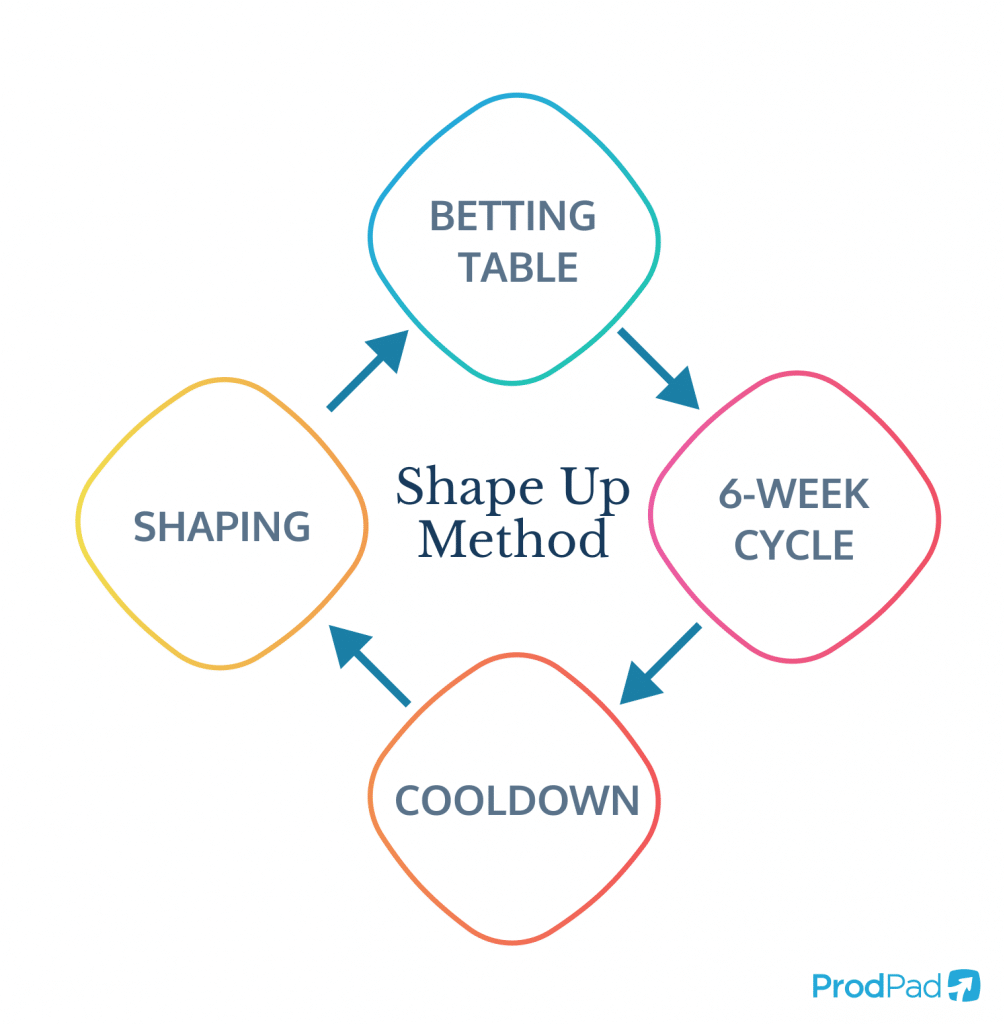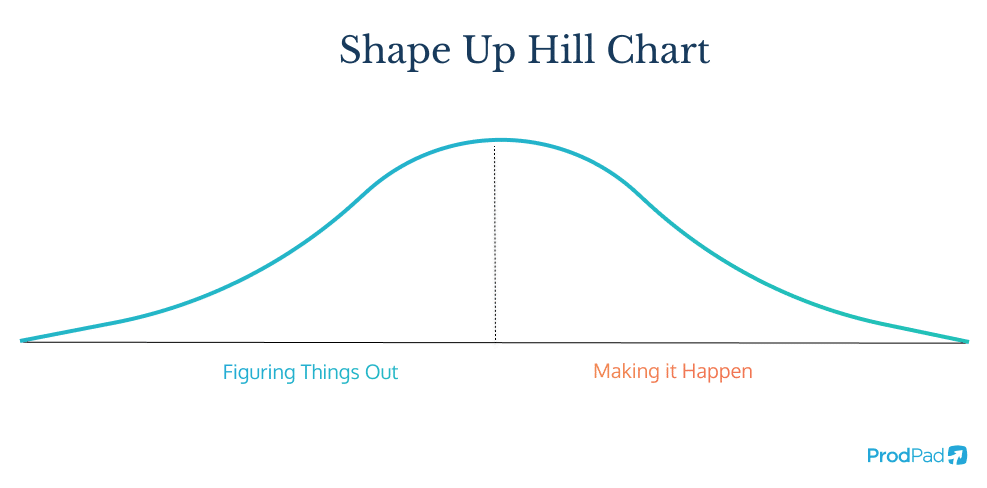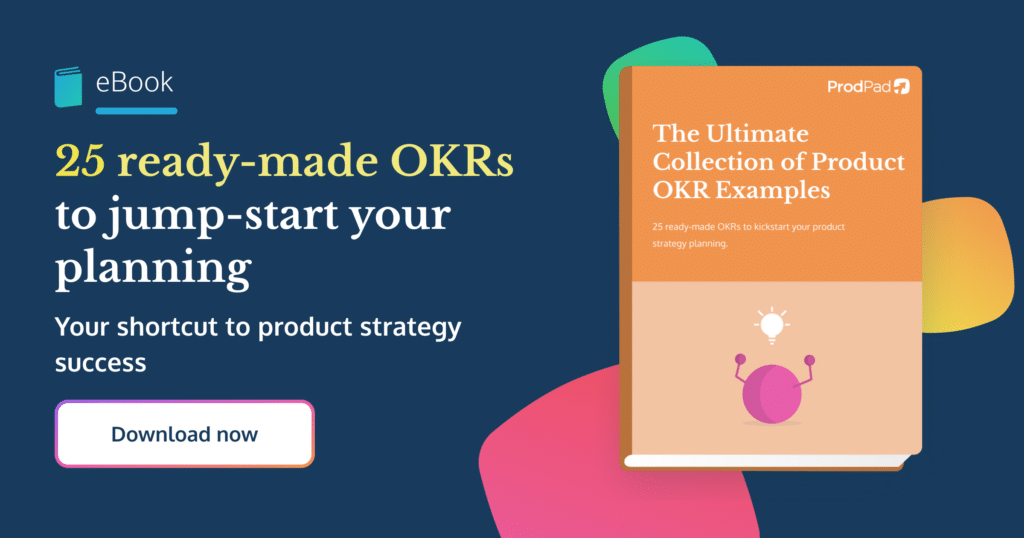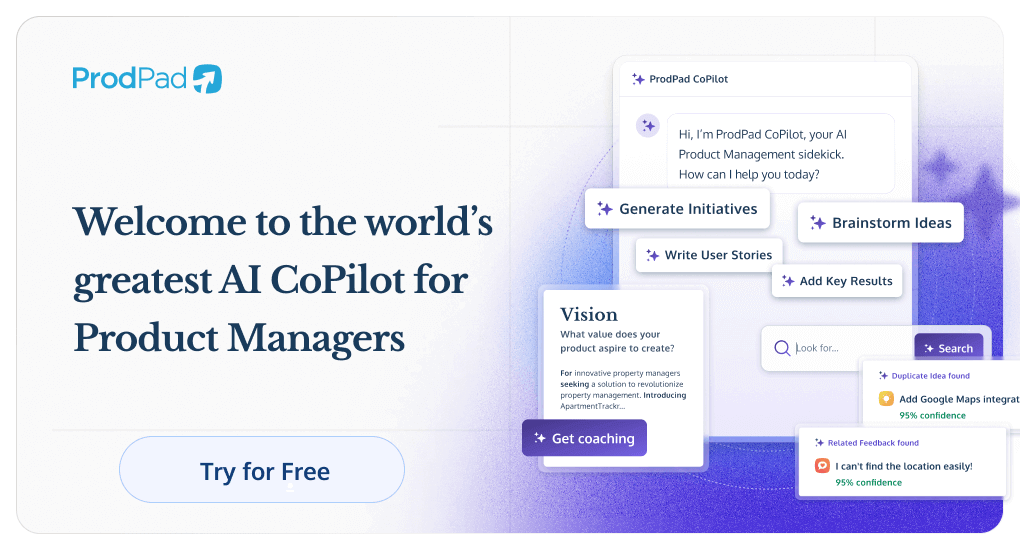Shape Up
What is Shape Up?
Shape Up is a product development framework that helps teams ship meaningful work in fixed, focused cycles. It centers on defining problems clearly before development begins, setting strict time constraints called appetites, and giving delivery teams autonomy to design solutions within those boundaries. Instead of relying on long backlogs or rolling sprints, Shape Up uses a combination of shaped project pitches, a six week cycle format, and flexible scope to keep teams moving toward complete, high-value outcomes.
Shape Up provides structure around:
- Shaping work before a team commits to it
- Choosing specific projects to bet on each cycle
- Running uninterrupted build cycles
- Keeping scope flexible so teams can finish on time
These practices aim to reduce thrash, avoid over-planning, and help teams finish substantial pieces of product work without constant interruptions.

Where Shape Up comes from
Shape Up was developed at Basecamp and documented in their book Shape Up: Stop Running in Circles and Ship Work That Matters. It emerged from their desire for a lighter, more focused alternative to traditional agile practices, tailored for small, senior, highly autonomous teams.
Basecamp wanted:
- Fewer meetings and less process overhead
- More trust in small, senior teams
- Clear commitments for a set period of time
- Less reliance on big backlogs that never seemed to shrink
Shape Up is their answer to those problems. It was designed for a specific environment: a relatively small, highly opinionated, founder-led product company with senior makers and a lot of autonomy.
That context is important. Many teams now adopt Shape Up fully or partially, but it works best when you understand the assumptions baked into it.
What are the core concepts of Shape Up?
Shape Up is made up of several ideas that work together as a complete system. Let’s dig into the key concepts and how they fit.
Shaping: Turning fuzzy ideas into clear bets
Shaping is the process of defining a project before it is given to the delivery team. It happens “uphill”, before a cycle starts, usually with senior people who have deep context.
Shaping includes:
- Defining the problem to solve
- Setting an appetite, which is the amount of time you are willing to spend
- Exploring possible approaches without overspecifying the solution
- Calling out risks and tricky areas
- Drawing clear boundaries for what is in and out of scope
The output is a pitch: a concise, written document that describes the shaped work clearly enough for a team to own and deliver it.
To turn fuzzy ideas into clear bets, start with a strong problem statement.
Appetite: Time as the constraint
Instead of estimating effort and sizing work in points, Shape Up uses appetite. An appetite is a simple statement of how much time the team is willing to invest, for example “we want to spend two weeks” or “this is worth a full six week cycle”.
Appetite drives the shape of the solution. The team is expected to design something valuable that fits inside the appetite, instead of trying to fit a fixed, detailed solution into the time.
The betting table: Choosing what to build
The betting table is where leadership decides which pitches to commit to for the next cycle. It replaces long-term roadmaps, big backlogs, and detailed sprint planning.
At the betting table, leaders:
- Review shaped pitches
- Consider the appetite and risk for each one
- Decide which projects to “bet on” for the next six week cycle
- Commit people and time to those bets
Once a bet is made, the team gets the time and space to work without constant re-prioritization.
Six week cycles and cooldowns
Shape Up is built around:
- Six week build cycles, where teams work on selected bets
- Followed by a two week cooldown, where they can fix bugs, tidy up, and shape new work
Six weeks is long enough to ship meaningful work, but short enough to limit risk and avoid epic projects that drag on.
Fixed time, variable scope
In Shape Up, time is fixed. Scope is flexible.
Teams are expected to:
- Ship something valuable within the appetite
- Cut or simplify scope if needed to hit the time box
- Focus on a coherent, complete outcome rather than implementing every idea
This keeps teams honest and prevents endless scope creep.
No backlog
Shape Up rejects the idea of a never-ending backlog. Instead of maintaining a huge list of ideas, only shaped pitches that are candidates for real bets are kept alive.
Ideas that are not important enough to shape and bet on simply fade away. This is meant to keep the focus on what the team is realistically willing to commit to in the near term.
Hill charts
Hill charts are a visual way to show progress through two broad phases:
- Uphill: still figuring things out, unknowns and problem solving
- Downhill: execution, where the path is clear and the work is about finishing

Hill charts do not track tasks or points. They track how “known” the work is, which can help stakeholders understand the real state of a project.
Why is Shape Up important for product managers?
Shape Up speaks to a lot of frustrations product managers have with traditional agile and messy backlogs. It offers a more intentional way to plan and deliver product work.
Here is why product managers pay attention to Shape Up:
Clear commitments, less thrash
Six week cycles and appetite-based planning give you a clear window for focused work. Product managers can set expectations with stakeholders, avoid constant mid-cycle changes, and protect teams from randomization.
Focus on outcomes, not ticket churn
Because Shape Up focuses on fully shaped bets and fixed-time delivery, the conversation shifts from “how many tickets did we close” to “what did we actually ship”. That fits better with outcome-based thinking.
A stronger shaping discipline
Shaping demands that someone really understands the problem, constraints, and risks before a team starts building. For product managers, this can be a useful forcing function to:
- Clarify the problem
- Push for better trade-offs
- Shorten the feedback loop between strategy and delivery
Better alignment with senior stakeholders
The betting table gives a structured moment for leadership to decide what matters most in the next cycle. Product managers can use this to surface key bets, clarify trade-offs, and make sure the team is not scattering effort across too many things.
What are common challenges with Shape Up and how can you overcome them?
For all its strengths, Shape Up is not plug-and-play. Teams often hit issues when they try to adopt it “by the book” in environments that look nothing like Basecamp.
Here are some common challenges and what you can do about them.
Relying too heavily on a few shapers
In many companies, shaping gets pulled toward a small group of people, often founders or senior executives. That creates a bottleneck and can disconnect the work from the people closest to customers.
How to address it:
Involve product managers, designers, and engineers in shaping. Treat shaping as a collaborative activity, not a top-down directive. Bring real customer data and feedback into shaping sessions.
“No roadmap” creating confusion
Shape Up is often framed as “we do not use roadmaps”. In practice, the betting table and list of upcoming pitches act a lot like a roadmap or portfolio view. If you do not share that view widely, everyone outside the room feels in the dark.
How to address it:
Give stakeholders a clear Now-Next-Later style view of bets and candidate bets. You can still use six week cycles, but present them in a roadmap format that non-Shape Up teams can understand.
Help keep shaping collaborative and visible. Share your bets with an outcome-based roadmap and bring everyone into the process.
Weak discovery practices
Shape Up focuses heavily on shaping and delivery. Discovery is mentioned, but not in depth. Teams that adopt Shape Up without a strong discovery practice risk shaping work in a vacuum.
How to address it:
Pair Shape Up with continuous discovery practices. Use interviews, experiments, and feedback analysis to feed shaping. Make sure pitches are backed by real insights, not just opinions.
Tighten up your Discovery process with a simple, reliable system for talking to users and validating ideas before you ever shape a pitch.
Struggling with appetite and scope
Teams new to Shape Up often struggle to choose realistic appetites. They either under-commit and leave value on the table or over-commit and squeeze the team.
How to address it:
Start with shorter appetites for smaller bets and learn from each cycle. After a few rounds, you will have better instincts for what fits in two weeks versus six. Encourage teams to actively cut scope instead of trying to cram everything in.
Applying Shape Up across many teams
Shape Up was born in a relatively small company. In larger, multi-team environments, coordinating several Shape Up teams at once is harder.
How to address it:
Use a portfolio-level roadmap to line up Shape Up cycles with other teams. Agree on shared objectives, cross-team dependencies, and a limited set of bets per cycle. Do not assume Shape Up alone will solve portfolio and alignment problems.
Tips for implementing Shape Up
Shape Up sounds appealing in theory, but making it work in practice needs clear intent and some adaptation. Here are tips for bringing it into your product organization.
Start small
Run Shape Up with one team or one product area first. Use it as a pilot. Learn what works in your context before rolling it out wider.
Make shaping visible
Do not let shaping happen behind closed doors. Document pitches clearly. Invite input from product, design, engineering, and customer-facing teams. Keep a visible list of candidate pitches and shaped work.
Tie bets to outcomes
Every shaped pitch should link back to a clear problem or outcome, such as improving a customer journey, reducing churn, or unlocking a new segment. This keeps bets connected to strategy, not just interesting ideas.
Combine Shape Up with OKRs or similar goals
Shape Up tells you how to run cycles. It does not replace strategic goal setting. Use OKRs or similar frameworks to define what you want to achieve over the quarter or year, then shape bets that move those goals forward.

Keep stakeholders in the loop
Explain the cycle structure, appetites, and betting table in simple terms. Give stakeholders a clear view of what is Now, what is Next, and what is Later. Regular, transparent updates will reduce anxiety about the “no backlog” philosophy.
Review and adapt after a few cycles
After two or three cycles, run a retro on the framework itself. Look at:
- Were appetites realistic?
- Did teams feel protected from interruptions?
- Did bets tie back to strategy?
- Did stakeholders feel informed?
Adjust how you shape, bet, and communicate based on what you learn.
Who is responsible for Shape Up?
Shape Up, like any framework, only works if the right people own the right parts. Here is how responsibilities usually break down.
Executive leadership
Leaders set the strategic direction, decide on major bets, and often sit at the betting table. They are responsible for:
- Clarifying the big problems and opportunities
- Providing the context for why certain bets matter
- Supporting fixed-time cycles by resisting mid-cycle resets
If leadership does not protect the cycles, Shape Up collapses into yet another “process”.
Product managers
Product managers are typically the bridge between strategy, shaping, and delivery. They:
- Gather insights from customers and data
- Help shape pitches that tie into product and business goals
- Facilitate discussions at the betting table
- Work with teams during the cycle to protect scope and keep outcomes clear
They play a key role in making sure Shape Up is grounded in real customer and market understanding, not just internal ideas.
Designers and engineers
Designers and engineers contribute to shaping and then execute the bets in the cycle.
They:
- Bring technical and UX constraints into shaping
- Help find simpler solutions that fit the appetite
- Own the day-to-day delivery during the cycle
- Communicate where they are on the “hill” and surface risks early
Their input is essential to avoid shaping unrealistic or fragile pitches.
Operations and adjacent teams
In larger organizations, operations, marketing, sales, and support teams need visibility into Shape Up cycles so they can plan rollout, messaging, and customer communication.
They are responsible for:
- Providing feedback from customers and the front line
- Preparing launch activities around shaped bets
- Closing the loop with customers when changes go live
When these teams are included, Shape Up becomes part of a broader product operating system instead of a siloed delivery framework.
How can ProdPad help with Shape Up?
Shape Up gives you a way to structure delivery in cycles. ProdPad gives you the strategic backbone and collaboration space that Shape Up alone does not cover.
Capture and shape ideas before they become bets
Use ProdPad’s Ideas workspace to collect ideas from across the company. Add impact, effort, customer insights, and links to feedback. This gives you a richer pool of candidates before shaping starts.
You can:
- Link ideas to customer feedback and problems
- Use AI in ProdPad to summarize themes and spot patterns
- Prioritize which ideas are worth shaping into pitches
Connect bets to a clear roadmap
Even if you run Shape Up cycles, you still need a way to communicate what is coming. ProdPad’s Now, Next, Later roadmaps let you show:
- Bets that are in the current cycle (Now)
- Candidate bets for upcoming cycles (Next)
- Longer term opportunities and themes (Later)
This makes your Shape Up world legible to stakeholders who expect a roadmap.
Tie Shape Up work to OKRs and outcomes
ProdPad’s objectives and key results help you define the outcomes you care about, then link ideas and initiatives to those goals.
You can:
- See which pitches support which objectives
- Track whether your bets move the needle
- Avoid cycles filled with work that is interesting but not strategic
Use feedback to fuel better shaping
ProdPad’s Feedback and Signals features pull in customer input from multiple channels. You can use that feedback to:
- Ground shaping in real customer problems
- Validate whether a pitch addresses a common pain
- Close the loop when a bet ships and solves an issue
This closes the gap Shape Up leaves around discovery and learning.
Let CoPilot help you shape
ProdPad CoPilot can assist with:
- Drafting pitches and problem statements based on your existing data
- Summarizing related ideas and feedback that connect to a theme
- Suggesting possible bets aligned with your objectives
You are still in control, but you get a head start on the shaping work.

By combining Shape Up with ProdPad, you get the best of both worlds: focused cycles for delivery, plus a clear, shared, outcome-driven product strategy that everyone can see.
Enjoy a single source of truth for every product idea
Start a free trial and see how easy your Product Management life could be with ProdPad